Jun 21, 2014 | coin design, coins, commemorative, commentary, gold, policy, US Mint
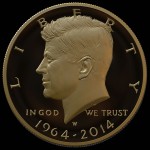
U.S. Mint mock-up of the 24 karat gold 50th anniversary Kennedy half dollar
It has been an ongoing theme written on this blog, the latest was about the nonsensical $1 Trillion coin, is that all you have to do to understand what the U.S. Mint can and cannot do is clearly documented in Title 31, Section 5112 of the United States Code (31 U.S.C. § 5112), Denominations, specifications, and design of coins.
You can read Section 5112 without having to obtain a law degree. It is very readable. It is the section that covers all of the specification for every coin struck by the Mint. It describes the size, weight, content, and the design of the coin. Very little is left up to the Mint in coinage design. But as the U.S. Mint is run by fallible humans, these laws were written by even more fallible humans: congress. This means that some of the laws are very clear while others are open to some interpretation.
First, it has been questioned whether the U.S. Mint can strike more 2014 National Baseball Hall of Fame commemorative coins since they sold out of the gold and silver coins. The answer to that question can be found in law (31 U.S.C. § 5112(m)). This is the section that describes the legal requirements for commemorative coins. Paragraph (2)(B) (31 U.S.C. § 5112(m)(2)(B)) says (emphasis mine):
If the Secretary determines, based on independent, market-based research conducted by a designated recipient organization of a commemorative coin program, that the mintage levels described in subparagraph (A) are not adequate to meet public demand for that commemorative coin, the Secretary may waive one or more of the requirements of subparagraph (A) with respect to that commemorative coin program.
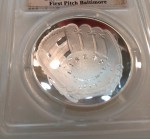
2014 National Baseball Hall of Fame commemorative silver dollars and gold commemoratives are sold out at the U.S. Mint.
As was the case with the 2005 Marine Corps Commemorative Silver Dollar, a quick sellout of the coins does satisfy the evidence necessary for the Secretary to make the decision to increase the production limits. In 2005, then Secretary of the Treasury John W. Snow authorized the U.S. Mint to produce 100,000 additional silver dollars. This was the last commemorative program sellout prior to the Hall of Fame coins.
However, the proposal to increase the production of the National Baseball Hall of Fame coins is speculation. This rumor has not been acknowledged by the U.S. Mint or the Department of the Treasury.
The other claim is that it is illegal or questionable that the U.S. Mint can produce the 2014 Kennedy Half Dollar gold coin. In an op-ed printed in Coin World, William T. Gibbs wrote, “The Mint is using what it cites as existing authority to produce a .9999 fine gold half dollar struck at the West Point Mint, with a 1964–2014 dual date and the higher relief 1964 portrait. The logic behind this coin is hard to understand. We’ve never had a gold half dollar before and the Mint’s legal authority to issue it is open to debate.”
Equating the fact that the U.S. Mint has never produced a gold half dollar coin is a parochial discussion and not whether the U.S. Mint can legally produce the coin. After all, the U.S. Mint produces quarter dollars made of five ounces of silver.

Congress makes the laws and they can change at almost any time!
The same questions were raised when the U.S. Mint issued the 2009 Ultra High Relief Double Eagle Gold Coin. The coin was based on the 1907 design by Augustus Saint-Gaudens was produced in .9999 fine gold and was issued under the Gold Bullion Coins provision of the law (31 U.S.C. § 5112(q)).
Gibbs further says, “When the Mint struck gold versions of the 2000 Sacagawea dollar and announced plans to sell them to the public, Congress stopped the Mint, stating that Mint officials lacked constitutional authority to issue the dollar coin in gold” as an additional argument against the U.S. Mint producing the Kennedy gold coin. In 2000, the law authorizing the U.S. Mint to strike 24-karat coins did not exit. The Buffalo Gold Bullion coin program that the decision is based was signed into law on December 22, 2005 as part of the Presidential $1 Coin Act of 2005 (Public Law 109–145 [PDF]).
The U.S. Mint may not be the most perfect agency and you may not like their decisions, but to accuse them of questionable legal practices is a bit naive.
Jun 7, 2014 | coins, policy, US Mint
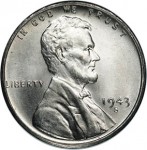
U.S. cents have been made of copper, steel, and copper plated zinc. What’s next?
You can read my previous posting about this here.
Even though the U.S. Mind does not define who its stakeholders are, I believe that collects are part of the stakeholder community and should be heard. If you do comment, the U.S. Mint is looking for input on the following factors:
- Costs to convert to circulating coins composed of alternative metals given the following possible changes to coins:
- Weight
- Electromagnetic signature
- Visual changes, such as color and relief
- Transition time needed to introduce a circulating coin composed of an alternative metal.
- Comments on how best to inform and educate both affected industries and the public on changes to circulating coins.
- Environmental impact from the use of circulating coins composed of alternative metals.
- Other issues of importance not identified above.
When commenting, note that the U.S. Mint said it is not considering aluminum alloy metals.
Comments may be sent by email to Coin.StakeholdersResponse@usmint.treas.gov. If you prefer to send your comments the traditional way, mail them to Coin Stakeholders Response, Office of Coin Studies, United States Mint, 801 9th Street NW., Washington, DC 20220.
If you do comment and would like to share what you said with the rest of the community, either send it to me via email or post it as a comment below.
Jun 4, 2014 | coins, commemorative, legislative, policy, US Mint
S. 2303: United States Coast Guard Commemorative Coin Act
Sponsor: Sen. Christopher Murphy (D-CT)
• To require the Secretary of the Treasury to mint coins in commemoration of the United States Coast Guard
• Introduced: May 7, 2014
• Referred to the Senate Committee on Banking, Housing, and Urban Affairs
Track this bill at https://www.govtrack.us/congress/bills/113/s2303
S. 2310: Mother’s Day Commemorative Coin Act
Sponsor: Sen. John “Jay” Rockefeller IV (D-WV)
• To require the Secretary of the Treasury to mint coins in commemoration of Mother’s Day
• Introduced: May 8, 2014
• Referred to the Senate Committee on Banking, Housing, and Urban Affairs
Track this bill at https://www.govtrack.us/congress/bills/113/s2310
Note that the likelihood of these bills passing is slim-to-none and Slim just left town. Since Sen. Rockefeller is retiring after this session, there is a small chance that Mother’s Day commemorative could be voted on by unanimous consent in December as a legislative “going away present.”
May 13, 2014 | ancient, coins, policy
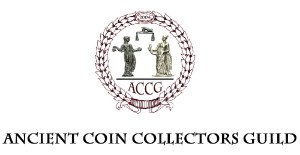 Before I begin today’s missive, please read the story I wrote about my friends who were arrested at the airport of a foreign country after digging up the $20 worth of ancients coins they found on a beach while playing in the sand. Go ahead… (click here) I’ll wait!
Before I begin today’s missive, please read the story I wrote about my friends who were arrested at the airport of a foreign country after digging up the $20 worth of ancients coins they found on a beach while playing in the sand. Go ahead… (click here) I’ll wait!
It is difficult to ignore the law of unintended consequences of Cultural Property Implementation Act (CPIA; 19 U.S.C. §§ 2601 et seq.) and how it is implementation by the State Department’s Cultural Property Advisory Committee (CPAC). Unfortunately, they are at it again.
CPAC will hold meetings on June 2-4, 2014 to review a new cultural property request from the Government of the Arab Republic of Egypt seeking import restrictions on archaeological and ethnological material. As with all of the other Memos of Understand (MOU), it will include ancient coins, even those that are common for ancient collectors and will also contain fuzzy language to make it look like Egypt could try to seek the return of undocumented items no matter when they were purchased.
The Ancient Coin Collectors Guild (ACCG) needs your help to make sure that the MOU between the United States and the Arab Republic of Egypt does not turn ancient coin collecting into a hobby where collectors have to look over their shoulders to watch out for foreign agents looking to confiscate their collections. This is not conspiracy theory talk. It has actually happened. Read the account by Patrick Heller in this article printed in Numismatic News (see the paragraph beginning with “Number four….”).
I ask that you support the ACCG and its efforts to prevent the government overreach into coin collecting by asking the State Department to “Exempt Ancient Coins” in whatever words or with whatever reasons you wish to offer. All you have to do is go to http://www.regulations.gov/#!docketDetail;D=DOS-2014-0008 and click on the blue “Comment Now” button on the right side of the page.
Comments are due by WEDNESDAY, May 14, 2014 before midnight.
Your effort is important and will be very much appreciated by the ACCG and the entire collecting community.
May 5, 2014 | coins, commemorative, legislative, policy, US Mint
Our long national nightmare is over, congress finally passed some sort of numismatic-related legislation. But do not get too excited because today’s news out of the House of Representatives is only the beginning. Next is for the Senate to do nothing while the bill languishes in committee.
H.R. 627: National Park Service 100th Anniversary Commemorative Coin Act
Sponsor: Rep. Erik Paulsen (R-MN)
• To provide for the issuance of coins to commemorate the 100th anniversary of the establishment of the National Park Service.
• Passed the House of Representatives: April 29, 2014
• Received in the Senate on April 29, 2014 and referred to the Senate Committee on Banking, Housing, and Urban Affairs
Track this bill at https://www.govtrack.us/congress/bills/113/hr627
Apr 10, 2014 | coins, commemorative, commentary, legislative, policy, US Mint
 Amongst all of the noise on Capitol Hill, the one area where no noise has been made is in the numismatic arena. For the last three months there has been no bill introduced, heard in committee, or acted on by either chamber of congress. Although there have been some hearings on a few issues, the last numismatic-related bill that had any congressional action was the introduction of the Pro Football Hall of Fame Commemorative Coin Act, S. 1842, introduced by Sen. Rob Portman (R-OH) in December.
Amongst all of the noise on Capitol Hill, the one area where no noise has been made is in the numismatic arena. For the last three months there has been no bill introduced, heard in committee, or acted on by either chamber of congress. Although there have been some hearings on a few issues, the last numismatic-related bill that had any congressional action was the introduction of the Pro Football Hall of Fame Commemorative Coin Act, S. 1842, introduced by Sen. Rob Portman (R-OH) in December.
This type of inactivity is unusual for congress. Regardless of party, congress is always looking to curry favor with their constituents and groups associated with their constituents by introducing commemorative coin legislation. Over the last few congresses (a two-year term), there will be over 40 coin-related bills that die in committee where very few even get a cursory hearing.
This does not mean there will be no commemorative coins in the near future. Now, the U.S. Mint has issued the Civil Rights Act of 1964 Silver Dollar and National Baseball Hall of Fame commemoratives. In fact, the Baseball Hall of Fame coins are so popular that the gold option has sold out of its 50,000 statutory mintage limit.
As an aside, a friend pointed out that the U.S. Mint did not bring 50,000 gold coins to the Whitman Baltimore Expo and wondered how many of those coins were purchased by baseball’s owners and members of the Baseball Hall of Fame. It would be interesting to see the effect of organized baseball on the sale of these coins.
In 2015, the U.S. Mint is scheduled to release a March of Dimes Commemorative Silver Dollar commemorative coin. Founded in 1938 by President Franklin D. Roosevelt to combat polio, the March of Dimes changed its mission to combating birth defects after the discovery of the polio vaccine by Dr. Jonas Salk in 1954. Salk’s work was supported by the organization.
Also on the schedule for 2015 is the United States Marshals Service 225th Anniversary commemorative coin series. The Marshal Service commemoratives will include a gold $5, silver dollar, and clad half-dollar coins. I do not think this will be as popular as the 2005 Marine Corps 30th Anniversary commemorative coins.
Officially, the 2016 scheduled commemorative will be the Mark Twain Commemorative coin program that will only include gold $5 and silver dollar coins. However, considering Twain’s mindset about being famous, I think he would be amused by having a commemorative coin made in his honor. I might call it the “Mark Twain Amusement commemorative.”
The only other commemorative coin with legislation that has passed congress and signed by the president is the 2017 Lions Clubs International Century of Service Silver Dollar.
Given the law says that there will be no more than two commemorative coin series per year (31 U.S.C. §5112(m)); and given that the next time only one commemorative coin is scheduled to be issues is in 2016, there is plenty of time for congress to do “something” and pass one of the bills that is currently waiting for their action.
Feb 9, 2014 | coins, commentary, counterfeit, policy
A persistent question that follows stories about counterfeiting is why do most of the counterfeits come from China and why do they get away with doing this? Unfortunately, the answer lies in differences in our laws, politics, and cultures that may not be as easily resolved as people would like. However, understanding the issues may make it easier to understand how to resolve the problems.
The easiest part of the explanation is the legal standpoint of what we see as counterfeiting versus what the Chinese legal system sees as ordinary commerce. In the United States, every coin ever minted is still legal tender and legally an instrument of the government. Although the Trade dollar was demonetized in 1876, it was remonetized as part of the Coinage Act of 1965 making it legal tender (31 U.S.C. § 5103) for trade in the United States. Even when the United States changes the design of a coin, it remains legal tender.
To protect its currency, the United States has anti-counterfeiting laws that say it is illegal to counterfeit the nation’s money and use in commerce. To protect the collection of collectible coins and currency, the United States created the Hobby Protection Act (15 U.S.C. § 2101 et. seq.) to protect the money supply when it is a collectible and not an instrument of commerce.
In the United States, laws a cumulative. Once passed, they remain the law until repealed or declared unconstitutional by the courts. This is not the way in many other countries. When a new government takes power they are given the authority to rewrite the laws in some form. Not only does this happen with authoritarian governments but in most parliamentary democracies. While new parliamentary governments have restrictions on the changes they make, authoritarian governments do not.
The People’s Republic of China has been run by the Communist Party since 1949. Their rules and laws were changed with the rise of Chairman Mao Zedong and get altered by the party every time a new chairman takes over the party. This includes the control over the money supply. Thus, when the Communist Party took over the country, they demonetized the money produced by the Republic of China and issued renminbi, the “people’s currency.”
In real terms, all coins struck since 1955, the first issued under the current government, are legal tender. Currency printed since 1999, the fifth series are the only legal tender notes. Any other coin or currency note has been demonetized.
Under Chinese anti-counterfeiting laws, it is illegal to duplicate any legal tender coin or currency note for any reason. However, since coinage from previous regimes is no longer legal tender, it is legal strike coins with designs that are no longer legal tender. Chinese laws do not recognize the collection of these coins as a market to protect. Coins are an instrument to facilitate commerce.
Buying and selling coins as an object is just a matter of commerce between individuals under Chinese law and not something that requires protection. While the Chinese buyer can use the obsolete coin as an object of barter, bartering does not hold the same legal status as paying with legal tender currency. Basically, once it is demonetized for new coinage, just about anything goes.
Unlike United States law Chinese law does not recognize the perpetual legal tender status of every coin issued. Chinese law also recognizes that counterfeiting current issues of other countries is also illegal because someone could try to use the coin in commerce where it is legal to use foreign currency. This means that in China, it would be illegal to reproduce a presidential dollar or Washington quarter, but producing Morgan dollars or a set of 1921 Walking Liberty half-dollars is legal in China because these are coins no longer issued in the United States.
When China is asked to assist the United States to stop the counterfeiting of coins, China does not recognize that its people are doing anything wrong. The coins are no longer being made, they are not in circulation, and their laws allow people to make copies of these coins. China does not recognize a collectible coin market. In fact, the only laws they have regarding collectibles are laws protecting antiquities and cultural properties. Under Chinese law, you cannot duplicate the proverbial Ming Dynasty vase and try to pass it off as real but it is legal to reproduce a Rembrandt masterpiece since he is not Chinese and his work was not made in China.
A trade attorney that was consulted for this article confirmed that when it comes to these issues, Chinese law is very protectionist. The claim is that they follow their laws consistently regardless of outside circumstances and they refuse to make exceptions citing the complication with enforcing their laws in a country with a population of more than 1.3 billion people.
Making the problem more difficult, copying and counterfeiting of grading service holders is not covered by Chinese law because they are not government entities. The grading services would have to fight the counterfeiters using Chinese patent and copyright law. A patent attorney confirmed that not only would this not stop the problem, but foreign challenges to alleged patent and copyright violations are rarely successful in Chinese courts.
The Chinese government has no incentive to help the United States or any other country fight counterfeiting in what is perceived by the Chinese as a small market problem. To put the resources necessary into what looks like a petty crime for selling inexpensive, non-circulating duplicate coins that are within Chinese law to manufacture is not worth their resources.
While there is anecdotal evidence that the Chinese government knows about the counterfeit trades and some officials informally support the efforts because they get kickbacks, official Chinese policy denies everything.
A lot has been written about the nature of the relationship between the United States and China since President Richard Nixon’s trip to China in 1972. Neither side trusts each other nor does neither side believe each other. Today, the United States decries the Chinese for buying too much of our debt, allegations of spying, industrial espionage, and cybercrimes. The Chinese say that the United States is trying to bully the world and that these naysayers are making up the stories to scare the world into following them. The United States talks about civil rights violations within Chinese border and the Chinese government tells the United States to mind its own business.
The greater opening of markets between the country and the increase in popularity of bullion coins has made the Chinese Panda a popular coin amongst collectors and investors. Those of us who buy these coins know that even with the production increases since 2010 new issues continue to command a premium greater than other bullion coins.
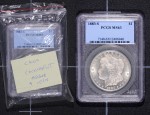
PCGS representatives showed Congressmen counterfeit U.S. coins in counterfeit PCGS holders during their recent meetings in Washington, DC. (Photo courtesy of PCGS.)
These are the values of the Chinese government. Whether you agree with them or not, Communist Party officials will resent anyone telling them how to manage their domestic affairs. They want advice about how to treat their citizens as much as the United States wants similar advice from China.
All things considered, there is no incentive for China to stop the manufacture of counterfeit collectable coins.
It is not against Chinese law for these people to manufacture coins that are no longer in production. Chinese people who are manufacturing these coins are working in China and many employ other people. It means there are fewer people on what little government assistance the Chinese government provides and they can collect taxes on the incomes.
When a United States trade representatives negotiate with their Chinese counterparts, it gives the Chinese a chance to lecture the United States how they resolved the counterfeiting issues which leads to a discussion on currency handling and management, which is a sore subject in the United States since the United States questions Chinese monetary policies.
Finally, it gives China a measure of moral superiority against the United States. After all, China figured out a way to prevent the impact of counterfeiting of older currency, why can’t the United States do the same?
China has no incentive to help the United States to solve a problem that they perceive does not exist. It is up to the United States to resolve these issues. This is why the industry needs the Collectible Coin Protection Act (H.R. 2754) to allow law enforcement to cut off the supply lines from the counterfeit manufacturers in the United States.
Jan 2, 2014 | coins, legislative, policy, US Mint
H.R. 3680: Breast Cancer Awareness Commemorative Coin Act
Sponsor: Rep. Carolyn Maloney (D-NY)
• To require the Secretary of the Treasury to mint coins in recognition of the fight against breast cancer.
• Introduced: December 9, 2013
• Referred to the House Committee on Financial Services
Track this bill at https://www.govtrack.us/congress/bills/113/hr3680
H.R. 3729: Korean Immigration Commemorative Coin Act
Sponsor: Rep. Robert “Rob” Andrews (D-NJ)
• To require the Secretary of the Treasury to mint coins in commemoration of the 100th anniversary of the beginning of Korean immigration into the United States.
• Introduced: December 12, 2013
• Referred to the House Committee on Financial Services
Track this bill at https://www.govtrack.us/congress/bills/113/hr3729
S. 1842: Pro Football Hall of Fame Commemorative Coin Act
Sponsor Sen. Robert “Rob” Portman (R-OH)
• A bill to require the Secretary of the Treasury to mint coins in recognition and celebration of the Pro Football Hall of Fame.
• Introduced: December 17, 2013
• Referred to the Senate Banking, Housing, and Urban Affairs Committee
Track this bill at https://www.govtrack.us/congress/bills/113/s1842
Dec 4, 2013 | coins, legislative, policy, US Mint
Cue the crickets…
There were no bills introduced, discussed or voted on by congress in November.
Regardless of the side of the political aisle you sit there is no denying that congress’s approval ratings being at an an all time low is not surprising. In the context of numismatics, congress decides what is produced making those of us interested in the numismatic market a watcher of congress as closely as the spot prices of precious metals. The monthly article describing the monthly legilsative activity in congress is from watching what may be in the pipeline for future products from the U.S. Mint.
Just so there is something to report, here is a list of the coin-related legislation and its status for the 113th congress:
Signed into Law
Believe it or not, there has been some law making in this congress. The following has passed both the House of Representatives and Senate and has be signed by the President of the United States into law:
H.R. 1071: To specify the size of the precious-metal blanks that will be used in the production of the National Baseball Hall of Fame commemorative coins.
Sponsor: Rep. Richard Hanna (R-NY)
• This bill is a technical change to the National Baseball Hall of Fame Commemorative Coin Act.
• Signed by the President on May 17, 213
• This bill became Public Law 113-10
See the information about this bill at http://www.govtrack.us/congress/bills/113/hr1071
Passed in the House of Representatives
Bills introduced and passed in the House of Representatives are sent to the Senate for consideration. The following bill passed the House and is awaiting action in the Senate:
H.R. 2754: Collectible Coin Protection Act
Sponsor: Rep. George “G.K.” Butterfield, Jr. (D-NC)
• To amend the Hobby Protection Act to make unlawful the provision of assistance or support in violation of that Act
• Introduced: Jul 19, 2013; Referred to House Energy and Commerce Committee
• Passed in the House of Representatives: Jul 30, 2013 (voice vote)
• Received in the Senate: July 31, 2013; Referred to Senate Committee on Commerce, Science, and Transportation
Track this bill at http://www.govtrack.us/congress/bills/113/hr2754
Introduced in the House of Representatives
Coin-related bills introduced in the House of Representatives are usually referred o the House Committee on Financial Services. Bills referred to other committees are noted in the following list of bills introduced in the House:
H.R. 77: Free Competition in Currency Act of 2013
Sponsor: Rep. Paul Broun Jr. (R-GA)
• To repeal the legal tender laws, to prohibit taxation on certain coins and bullion, and to repeal superfluous sections related to coinage.
• Introduced on January 3, 2013
• Referred to the Financial Services, Ways and Means, and the Judiciary Committees on January 3, 2013
Track this bill at http://www.govtrack.us/congress/bills/113/hr77
H.R. 220: Stop the Coin Act
Sponsor: Rep. Greg Walden (R-OR)
• To limit the face value of coins that the Secretary of the Treasury may issue.
• Introduced on January 14, 2013
• Referred to the House Committee on Financial Services on January 14, 2013
Track this bill at http://www.govtrack.us/congress/bills/113/hr220
H.R. 627: National Park Service 100th Anniversary Commemorative Coin Act
Sponsor: Rep. Erik Paulsen (R-MN)
• To provide for the issuance of coins to commemorate the 100th anniversary of the establishment of the National Park Service.
• Introduced: February 13, 2013
• Referred to the House Financial Services Committee on February 13, 2013
Track this bill at
H.R. 1218: Commemorative Coins Reform Act of 2013
Sponsor: Rep. Justin Amash (R-MI)
• To prohibit the payment of surcharges for commemorative coin programs to private organizations or entities
• Introduced: March 15, 2013
• Referred to the House Financial Services Committee on March 15, 2013
Track this bill at http://www.govtrack.us/congress/bills/113/hr1218
H.R. 1653: Pro Football Hall of Fame Commemorative Coin Act
Sponsor: Rep. James Renacci (R-OH)
• Introduced: April 18, 2013
Track this bill at http://www.govtrack.us/congress/bills/113/hr1653
H.R. 1719: Cents and Sensibility Act
Sponsor: Rep. Steve Stivers (R-OH)
• To amend title 31, United States Code, to save the American taxpayers money by immediately altering the metallic composition of the one-cent, five-cent, dime, and quarter dollar coins, and for other purposes.
• Introduced: April 24, 2013
Track this bill at http://www.govtrack.us/congress/bills/113/hr1719
H.R. 1905: Mother’s Day Centennial Commemorative Coin Act
Sponsor: Rep. David McKinley (R-WV)
• Introduced: May 9, 2013
Track this bill at http://www.govtrack.us/congress/bills/113/hr1905
H.R. 2366: World War I American Veterans Centennial Commemorative Coin Act
Sponsor: Rep. Doug Lamborn (R-CO)
• Introduced: June 13, 2013
Track this bill at http://www.govtrack.us/congress/bills/113/hr2366
H.R. 2633: Thirteenth Amendment Commemorative Coin Act
Sponsor: Rep. Danny Davis (D-IL)
• To require the Treasury to mint coins in commemoration of the Sesquicentennial Anniversary of the adoption of the Thirteenth Amendment to the United States Constitution, which officially marked the abolishment of slavery in the United States.
• Introduced: July 9, 2013
Track this bill at http://www.govtrack.us/congress/bills/113/hr2633
H.R. 2760: Panama Canal and Pan-Pacific Exhibition Centennial Celebration Act
Sponsor: Rep. Nancy Pelosi (D-CA)
• To require the Secretary of the Treasury to mint coins in commemoration of the centennial of the Panama-Pacific International Exposition and the Panama Canal
• Introduced: July 19, 2013
Track this bill at http://www.govtrack.us/congress/bills/113/hr2760
H.R. 2932: United States Coast Guard Commemorative Coin Act
Sponsor: Rep. Joe Courtney (D-CT)
• To require the Secretary of the Treasury to mint coins in commemoration of the United States Coast Guard.
• Introduced: August 1, 2013
Track this bill at http://www.govtrack.us/congress/bills/113/hr2932
H.R. 3146: Savings, Accountability, Value, and Efficiency (SAVE) II Act
Sponsor: Rep. Patrick Murphy (D-FL)
• To take steps to reduce the deficit of the Federal Government.
• Sec. 8. Prohibition On Non-Cost Effective Minting and Printing Of Coins and Currency
• Introduced: September 18, 2013
• Referred to many committees including the Committee on Ways and Means
Track this bill at http://www.govtrack.us/congress/bills/113/hr3146
Sponsor: Rep. Michael Fitzpatrick (R-PA)
• To improve the circulation of $1 coins, to remove barriers to the circulation of such coins.
• Introduced: October 22, 2013
Track this bill at http://www.govtrack.us/congress/bills/113/hr3305
Introduced in the Senate
Even though financial bills are constitutionally required to begin in the House of Representatives, it is not beneath the Senate to introduce their own legislation or concurrent bills with the House. Coin-related bills introduced in the Senate are usually referred to the Senate Committee on Banking, Housing, and Urban Affairs. The bills introduced in the Senate are as follows:
S. 94: To terminate the $1 presidential coin program
Sponsor: Sen. David Vitter (R-LA)
• Introduced on January 23, 2013
• Referred to the Senate Committee on Banking, Housing, and Urban Affairs on January 23, 2013
Track this bill at http://www.govtrack.us/congress/bills/113/s94
S. 203: Pro Football Hall of Fame Commemorative Coin Act
Sponsor: Sen. Robert “Rob” Portman (R-OH)
• A bill to require the Secretary of the Treasury to mint coins in recognition and celebration of the Pro Football Hall of Fame.
• Introduced on January 31, 2013
• Senate Banking, Housing, and Urban Affairs Committee on January 31, 2013
Track this bill at http://www.govtrack.us/congress/bills/113/s203
S. 768: Sound Money Promotion Act
Sponsor: Sen. Mike Lee (R-UT)
• A bill to treat gold and silver coins used as legal tender in the same manner as United States currency for taxation purposes.
• Introduced: April 18, 2013
• Referred to the Senate Committee on Finance
Track this bill at http://www.govtrack.us/congress/bills/113/s768
S. 1011: Boys Town Centennial Commemorative Coin Act
Sponsor: Sen. Mike Johanns (R-NE)
• A bill to require the Secretary of the Treasury to mint coins in commemoration of the centennial of Boys Town
• Introduced: May 22, 2013
• Referred to the Senate Committee on Finance
Track this bill at http://www.govtrack.us/congress/bills/113/s1011
S. 1105: Currency Optimization, Innovation, and National Savings Act
Sponsor: Sen. Tom Harkin (D-IA)
• To improve the circulation of $1 coins, to remove barrier to the circulation of such coins
• Introduced: June 6, 2013
Track this bill at http://www.govtrack.us/congress/bills/113/s1105
S. 1158: National Park Service 100th Anniversary Commemorative Coin Act
Sponsor: Sen. Mark Warner (D-VA)
• Introduced: June 13, 2013
Track this bill at http://www.govtrack.us/congress/bills/113/s1158
Nov 20, 2013 | advice, coin design, commemorative, legislative, policy, US Mint
As a comment on my post about the selection design for my 2014 Baseball Hall of Fame Commemorative coin a reader commented with a simple question: Can you offer a suggestion as to who I can approach to offer an idea for a commemorative dollar?
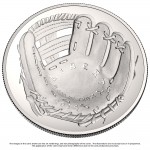
National Baseball Hall of Fame Commemorative was introduced by Rep. Richard Hanna (R-NY) whose district includes Cooperstown, NY
While I cannot fix the fractious nature of congress, I can offer suggestions as to how to get a commemorative coin recognized as a good idea.
As you read this post, let me remind you that former German Chancellor Otto von Bismarck once said, “Laws are like sausages, it is better not to see them being made.” What follows is a look into what it takes to make the sausage in order to propose a commemorative coin and have it become law.
First, rather than starting with congress talk with organizations in the area of interest. After all, commemorative coin programs are fundraising vehicles for the organizations. It helps congress know who will receive the money. In this case, my correspondent wants to see a commemorative coin to be issued in 2017 commemorate the 50th anniversary of the first ever heart transplant.
“My hope is to get more people aware of the need of people to sign up for the donor list to make more organs available,” my correspondent writes. “A donor sign up card could be included with each order. Proceeds could fund awareness program….”
The problem is that this is a good and noble idea but the first question a congress person would ask is what organization would receive the money? Unfortunately, congress is not into creative thinking and would like to know who could receive the money, how the money would be used, and what guarantees that the money earned from the commemorative program would be used for its intended purposes.
Do not expect the representative to do all of the work. In fact, do not expect the congress person to do much of the work until the bill is written and submitted. Even though congress will be in session fewer hours this year than in recent recorded memory, the members will tell you they are too busy to work on this issue. The nature of modern politics is that unless you are going to cut them, the party, their political action committee, or one of their other campaign committees a check, your chance for success is diminished.
However, you can cut through the fog of politics by working with a credible non-profit organization—or a coalition of non-profit organizations—with your interest.

I’m just a bill
Yes, I’m only a bill
And I’m sitting here on Capitol Hill
When contacting these people, I would have an elevator-speech ready. An elevator speech is one that pitches your idea in the time it would take to ride an elevator. In other words, keep it short and to the point. Make sure your pitch includes something compelling to want them ask for more information and make sure you anticipate any questions.
The nice part about partnering with the AHA is that they are very experienced with legislative affairs. I have no doubt that they either have a full-time lobbyist on staff or have hired a lobbying firm to represent their interests before congress. This is one area where you do not have to answer questions. However you should know a little about commemorative coin bills that congress has considered. These issues are as follows:
Q: After a commemorative coin bill is introduced, which committee will it be assigned?
Q: How does the organization make money from a commemorative coin?
A: Congress sets a surcharge over and above the cost to produce the coin that will be given to the sponsoring organization. Usually, the surcharges are $35 for gold coins, $10 for silver dollars, and $5 for clad 50-cent coins.
Q: Are limits set for the number of coins sold?
A: There are no pre-set limits unless written into the law. Usually, congress has set the limits to be not more than 100,000 $5 gold coins, 500,000 $1 silver coins, and 750,000 50-cent clad coins. The number of uncirculated versus proof issues is determined by the
U.S. Mint as long as they remain within these limits. Coins are produced and sold by the U.S. Mint only during the year of issue.
Q: Who designs the coins?
Q: How do we request that heart health and transplant awareness be inserted into the coins with the Certificate of Authenticity?
A: Make sure that the information is added to the law. Unless the sponsoring organization can compel the U.S. Mint to add it, you are better off making sure the law requires that the U.S. Mint does this.
Q: Can you give me an example of how one of these bills is written?
A: Most of the time, when you read the bills submitted to congress, you will see text that calls for editing of the law, which is called the United States Code (U.S.C.). It may say to strike words, replace words, add paragraphs, add sections, and all sorts of other editing that does not make sense unless you know what the U.S.C. says when the bill was written.
Since most commemorative coin bills are additions to the law, they are usually added to Title 31, Section 5112 of the United States Code (31 U.S.C. § 5112). Many times, the bill does not mention where the new law will be inserted when it is introduced. It will be corrected before passage.
If you want to provide the member of congress with the text of a bill, which many times is helpful, you may want to use something that has already been introduced as an example to write your own text. Two good examples are as follows:
When visiting the website, look on the right side in the lower half for the link marked “Read Bill Text.”
Both bills specify gold, silver, and clad coins. Your proposal does not have to include all three. In fact, to raise awareness, you might want to consider just a silver dollar and a clad half-dollar.
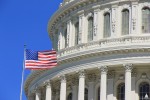
Too bad there’s so much dysfunction in such a beautiful building.
Once you convince a member of congress to submit the bill and get the member’s support, a professional legislative affairs person would know how to convince other members to sign up as co-sponsors. While having a lot of co-sponsors does not guarantee success, it helps with the bill’s awareness and make it more attractive to pass.
There are other political maneuvers that can be used to have the bill passed, such as convincing a member to bring up the bill under a procedure called “suspension of the rules.” In the House of Representatives, a bill brought to a floor vote under the suspension of the rules are usually non-controversial measures that have no objections—or no objections that would be voiced on the floor. The bill would then pass by unanimous consent or a voice vote.
The procedure is similar in the Senate.
Once the bill passes one chamber, it is sent to the other for it to work on passage.

House of Representatives
While the bill is in congress it does not mean you have to sit on your hands and wait. One of the best things you can do is to tell your friends, relatives, and anyone else who will listen to call or email their representative to support the bill. If they are not a co-sponsor, tell their staff that they member should be and why. If they are a co-sponsor, thank them for their support and ask if they could get other members signed on as co-sponsors. If you can find people whose representatives are a member of the House Financial Services Committee or the Senate Banking Committee, then they should modify their support by saying to please help get the bill passed through the committee.

The World’s Most Deliberative Body, the United States Senate
But that does not mean to stop your efforts. Citizen lobbying efforts in the Senate are doubled because each state has two senators. Make sure you and your supporters contact both of your senators. Remember, it is your right as a citizen to meet with your representatives and this includes senators. You can make an appointment to let your senators know how your feel. If your senator is a member of the Senate Banking Committee, then they should be asked to help move the bill out of committee and to the floor for a vote.
The work is not done until the bill is passed or congress is adjourned for the last time on January 2, 2015. Bills not acted upon when congress adjourns for the last time in the session will be considered to have “died in committee.” If the bill dies in committee, you can do this all over again and try to convince a member of congress to submit the bill in the 114th congress that would open its session at noon on January 3, 2015.
If the bill passes both chambers it is likely it will be signed by the president. As far as I know there has never been a commemorative coin bill to have been vetoed by any president.
Although there are a lot of good ideas, many of them are not properly introduced to congress. The few that do make it do not receive enough support to move beyond introduction. Even fewer are passed by one chamber and not both. Those that make it past congress to the president’s desk had some effort behind them besides being just a good idea. After all, with only two commemorative coin programs allowed per year, congress has to be convinced to believe your commemorative idea is better than another for that same year.
Sausage anyone?
Baseball Hall of Fame Commemorative coin courtesy of the
U.S. Mint.
Images of congress and the capitol courtesy of the
Architect of the Capitol.
Image from School House Rock’s “I’m Just a Bill” can be found all over the interwebs.










